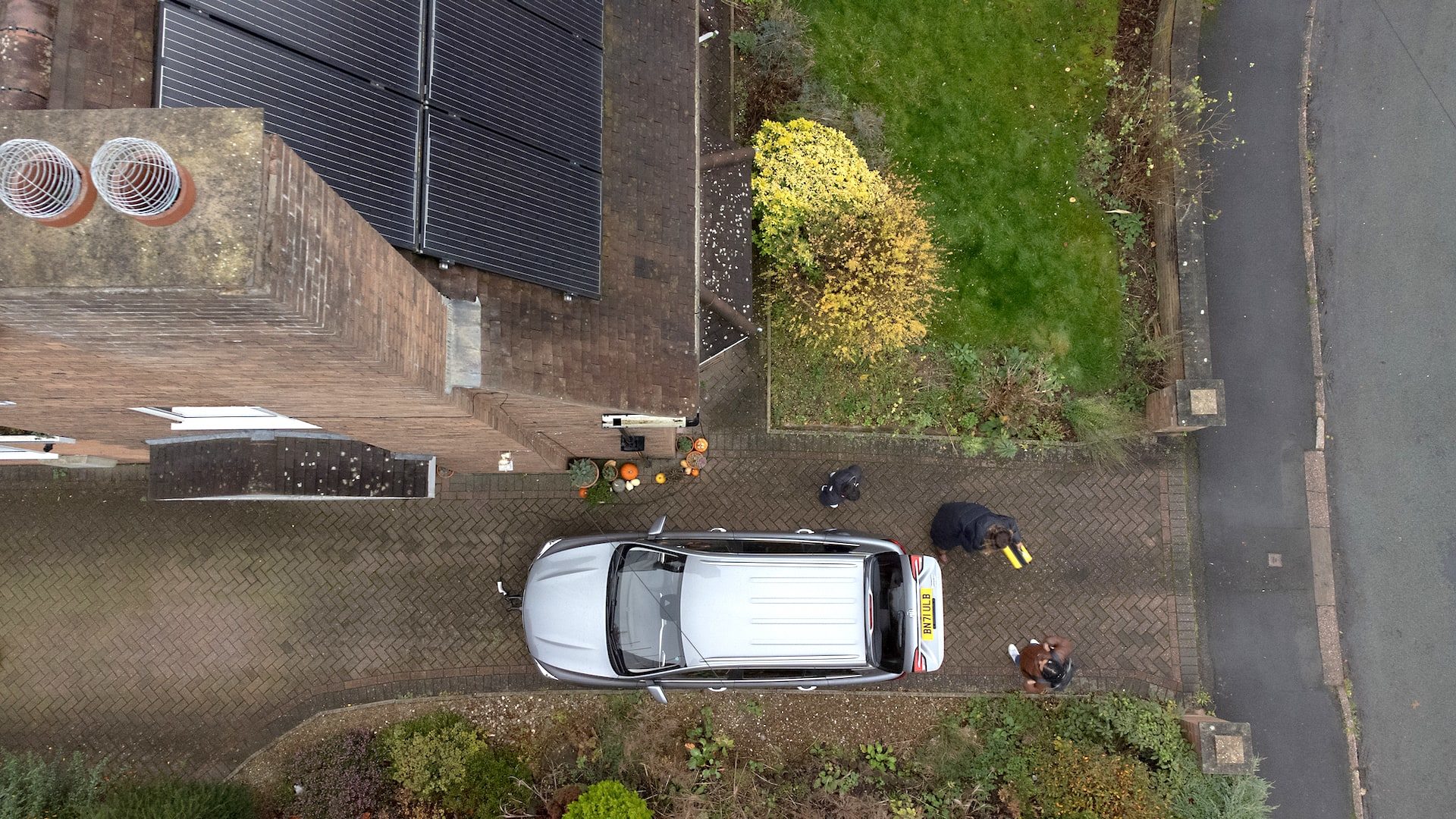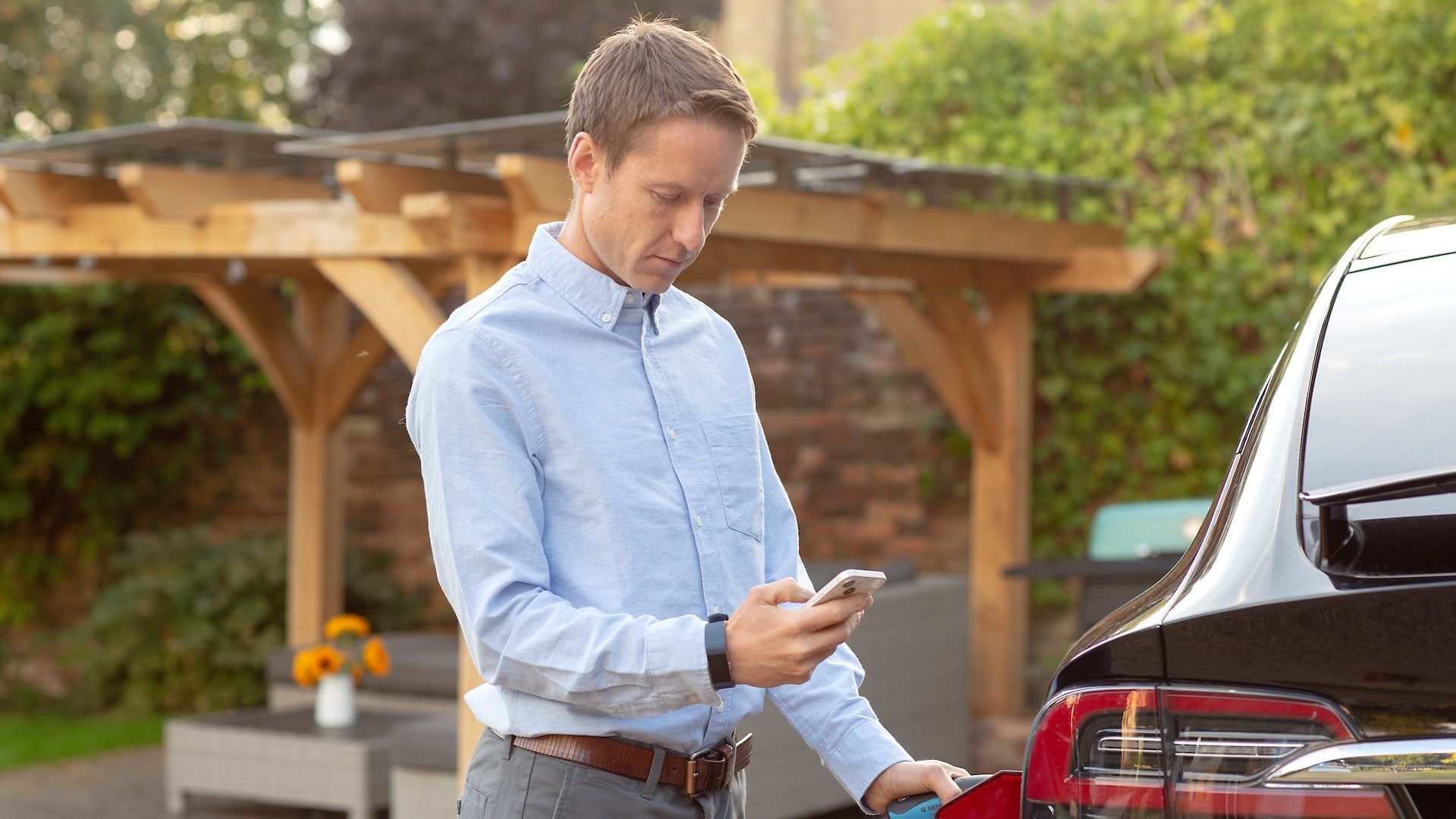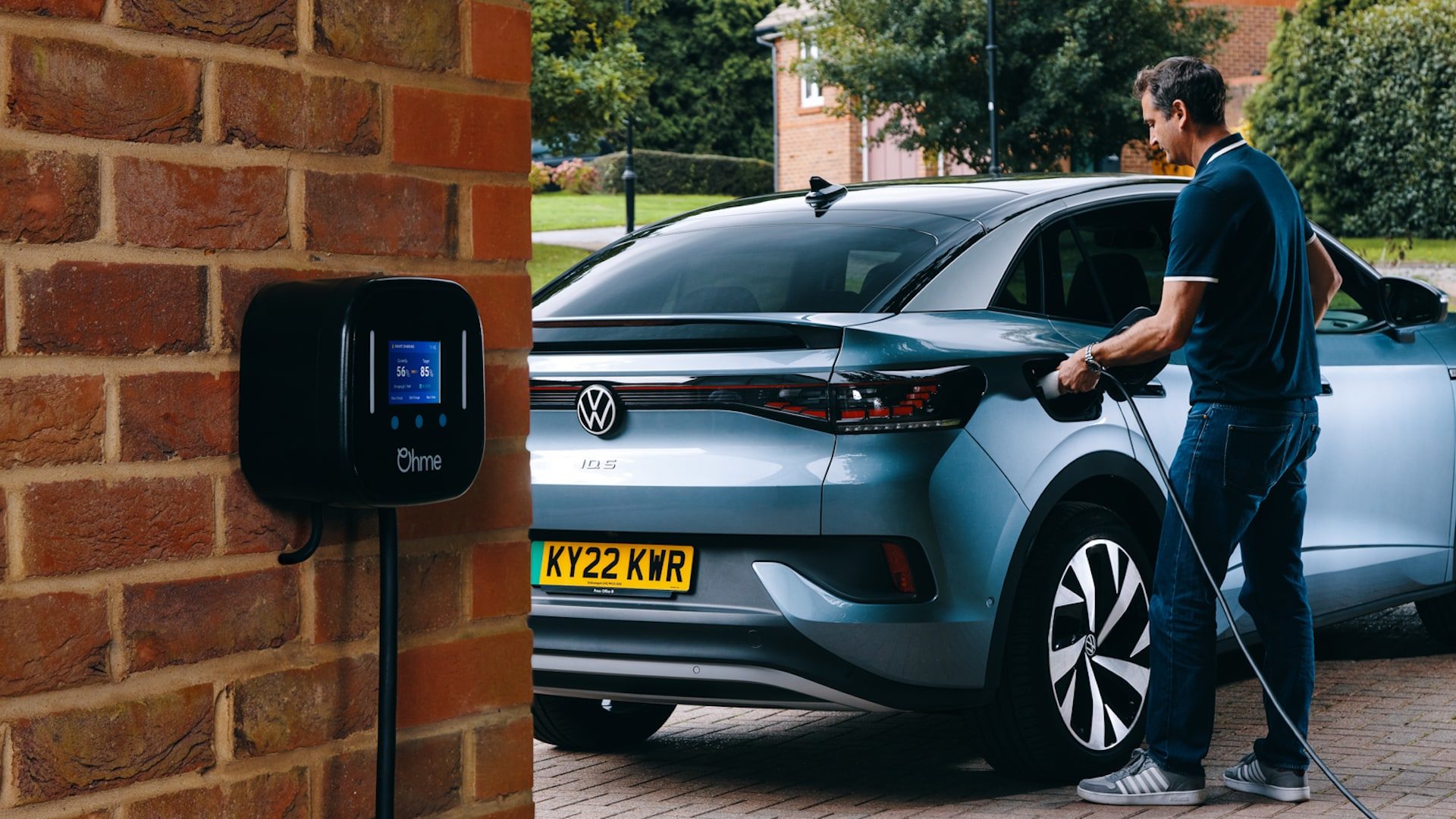
Electric car owners are seven times more likely to have solar panels fitted to their homes, compared to the national average.
It means nearly a third of EV drivers can potentially use the sun’s energy to charge their car, avoiding high energy prices.
In addition, more than one in 10 EV drivers have a home battery to store surplus energy.
These are some of the findings from the latest EV Charging Survey, conducted each year by the Zap-Map website.
Keen to go green

Zap-Map’s research suggests that electric vehicles can be a gateway to green technologies, although high initial costs may still be a barrier.
Owning an electric car means drivers are 20 percent more likely to have a smart meter fitted at home. Almost three-quarters (72 percent) of EV owners have a way of tracking their energy usage, compared to a national average of 50 percent.
When it comes to the latest clean energy technology, seven percent of EV owners have a heat pump instead of a gas boiler. For comparison, only one percent of the wider population has a heat pump.
Upfront costs still a barrier

Additional research by renewable power supplier Good Energy finds that upfront costs prevent many people from embracing green tech.
The price of installation was a barrier to 64 percent of people when considering a heat pump, while solar panel prices are a stumbling block for 54 percent.
Melanie Shufflebotham, COO of Zap-Map, said: “‘A gateway to clean energy’ is a great way of thinking about EVs. As soon as you change the energy you use to fuel your vehicle, you start thinking about the energy you use elsewhere in your life. Then you realise you can reduce your running costs with solar panels, too.
“That said, the upfront cost of the tech does highlight, once again, the gap between wealthier homeowners with off-street parking and those without a driveway, or who are just not as well off. Which is why we need more affordable on-street or local charging options.”
ALSO READ:
Most drivers want dash cams to be standard equipment
Personally, I feel the defects in the grid and when you start looking at what it cost’s you after you purchase an EV your costs out of pocket are way greater than the benefits. I absolutely need to purchase a new truck this year, BUT after 6 months of researching what I can afford and what I want I am no where near deciding except that it won’t be an EV. They don’t have the range and most likely will never have the range I need for towing my trailer 300 plus miles WITHOUT needing to stop for an hour while I wait for it to charge. It definitely won’t be a new truck for several reasons the main one being that the new trucks are unreliable and you cannot get one with a manual transmission. While I would take an automatic transmission the cost to get it repaired after the warranty runs out is cost prohibitive vs the value of said vehicle. My current truck has 280,000 miles on it and I replaced the factory clutch once, the only reason I am having to buy a new one is because the brine they put on the roads in the Mid-Atlantic eats away at everything. From body panels to brake lines, it corrodes anything metal plus it is not good at all for the environment and proven to be worthless as a aide to keeping the roads from icing over. The amount of collateral damage it does vs it’s ability to perform as a de-icing agent far out weighs it’s use. I’m pretty confident that whomever “sold” the idea to the EPA and the states has some link to the auto industry, it’s pretty simple to figure that one out. The new vehicle’s made since the early 2000’s are built way better and last way longer than they use to as long as you keep them maintained. Hence the issue is that it interferes with the Obama initiative of the government buy back program of 2009, this way instead of that they don’t pay anything out and you end up having to replace it due to that brine will eventually do enough damage your vehicle won’t be safe to drive. When consumers went after GM for their brake lines blowing out due to corrosion GM simply stated to wash your vehicle after a storm. However, that is kind of a false statement because that brine contains a “sticking” agent that keeps it stuck to the roads or anything for that matter. I have tested this myself on my Jeep, where after a storm and the roads were dry again I took it to a carwash and had it cleaned. When I pulled into my garage I noticed that the headlights were NOT cleaned. I ran my finger over the lens and it still had a film on it, so plain old soap and water solution being sprayed on it will not clean it off. They WILL not stop using it because it’s serving a dual purpose by causing your vehicle to corrode and “supposedly” keeping the roads from freezing over. BUT here’s a novel idea, how about people learn how to drive instead of complaining about the roads not being completely cleared.